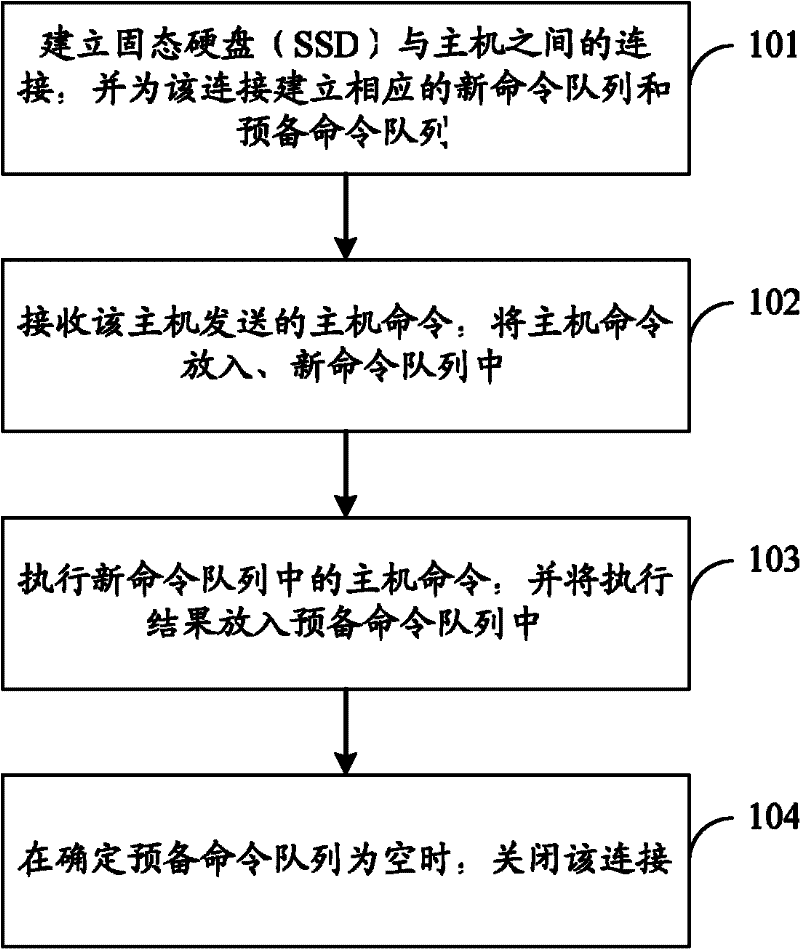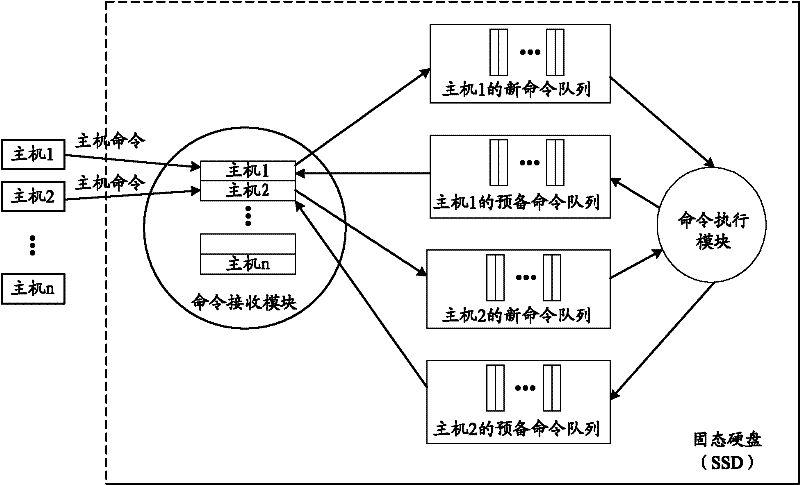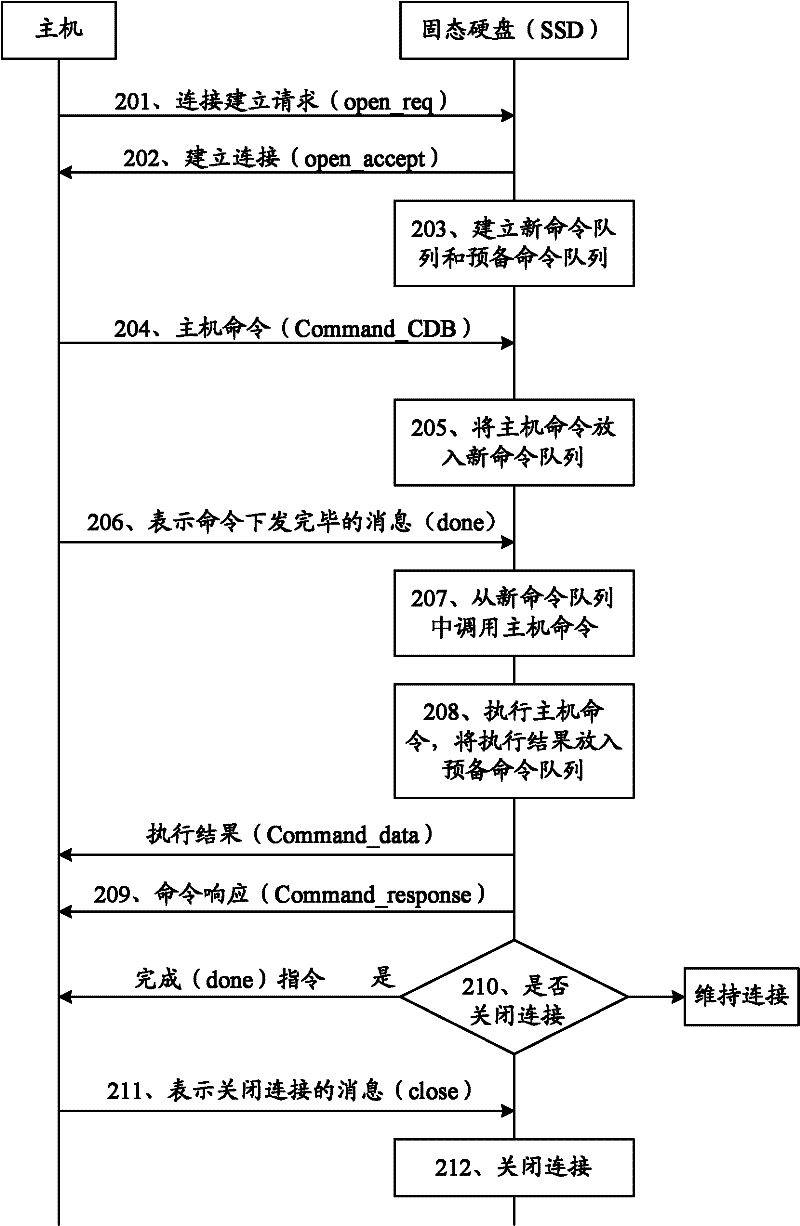Connecting and processing method of solid state disk (SSD), SSD and system
A solid-state hard disk and processing device technology, applied in the field of communications, can solve problems such as unfavorable SSD performance, large overhead, and improvement, and achieve the effects of improving performance and reducing the number of setup and shutdown times.
- Summary
- Abstract
- Description
- Claims
- Application Information
AI Technical Summary
Problems solved by technology
Method used
Image
Examples
Embodiment 1
[0029] This embodiment will be described from the perspective of SSD.
[0030] Such as figure 1 As shown, the specific process can be as follows:
[0031] 101. Establish a connection between the SSD and the host, and establish a corresponding new command queue and a ready command queue for the connection; wherein, the new command queue is used to store unexecuted host commands received from the host, and the ready command The queue is used to store the execution result of the host command, which has not yet returned a response to the host.
[0032] Since SAS has the feature of supporting multi-device connections, SSDs can establish connections with multiple hosts through SAS. During specific implementation, preset rules can be used to control the timing of establishing connections between each host and SSD. For example, the preset rule can be:
[0033] Establish connection A between the SSD and the first host (referred to as host 1), maintain connection A, and establish con...
Embodiment 2
[0056] According to the method described in Embodiment 1, an example will be given below for further detailed description.
[0057] The SSD establishes connections with multiple hosts through SAS, and establishes new command queues and standby command queues for each host. When the host sends host commands to the SSD, the command receiving module of the SSD receives these host commands and sends the received host commands to the SSD. The command is placed in the new command queue of the corresponding host, and the command execution module of the SSD invokes the required host command from the new command queue for execution, and puts the execution result into the standby command queue of the corresponding host, which can then be passed to the SSD The command receiving module returns a command response to the corresponding host. After executing the host command, the SSD will not immediately disconnect from the corresponding host, but when it is determined that the connection reac...
Embodiment 3
[0089] In order to better implement the above method, the embodiment of the present invention also provides a corresponding SSD, such as Figure 3a As shown, the SSD includes a building unit 301, a receiving unit 302, an executing unit 303 and a closing unit 304;
[0090] Establishing unit 301, configured to establish a connection between the SSD and the host, and establish a new command queue and a standby command queue;
[0091] For example, the SSD receives a connection request message (open_req) sent by the host, and then returns an accept connection message (open_accept) to the host to establish a connection between the SSD and the host according to the received open_req, and establishes a new command queue and a standby command queue.
[0092] It should be noted that since SAS has the feature of supporting multi-device connections, SSDs can establish connections with multiple hosts through SAS, namely:
[0093] The establishment unit 301 is specifically configured to es...
PUM
 Login to View More
Login to View More Abstract
Description
Claims
Application Information
 Login to View More
Login to View More - R&D
- Intellectual Property
- Life Sciences
- Materials
- Tech Scout
- Unparalleled Data Quality
- Higher Quality Content
- 60% Fewer Hallucinations
Browse by: Latest US Patents, China's latest patents, Technical Efficacy Thesaurus, Application Domain, Technology Topic, Popular Technical Reports.
© 2025 PatSnap. All rights reserved.Legal|Privacy policy|Modern Slavery Act Transparency Statement|Sitemap|About US| Contact US: help@patsnap.com



